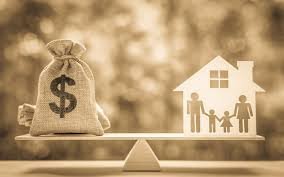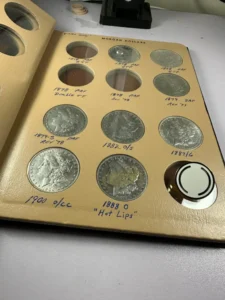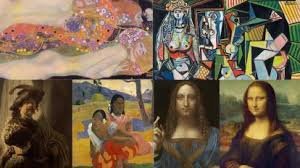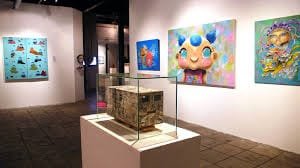For centuries, the concept of generational wealth has been closely associated with material assets: land, stocks, bonds, and businesses passed from parents to children. Yet beyond these tangible forms of capital lies an often underappreciated domain of wealth: cultural assets. These include art collections, family traditions, languages, heirlooms, rituals, knowledge systems, and even social networks cultivated over generations.
This article explores how cultural assets contribute to building and preserving generational wealth. Drawing from economic theories, sociological perspectives, and practical examples from around the world, it aims to objectively demonstrate how families and communities can strategically nurture cultural assets to create enduring legacies that go beyond monetary measures.
Understanding Cultural Assets
Before discussing how cultural assets create generational wealth, it’s crucial to clarify what cultural assets are.
Cultural assets can be broadly categorized into tangible and intangible assets:
Tangible cultural assets: These are physical objects or properties that hold cultural significance. Examples include paintings, sculptures, historic buildings, books, textiles, jewelry, and musical instruments.
Intangible cultural assets: These are non-physical elements that represent cultural heritage. They include traditions, languages, stories, knowledge, rituals, artistic expressions, and craftsmanship.
Unlike purely financial assets, cultural assets often have layered value: historical, social, symbolic, and, in many cases, economic.
The Value Proposition of Cultural Assets
Cultural assets offer value in several ways:
Economic Value: Art collections, heritage properties, and historically significant artifacts can appreciate over time, sometimes outperforming traditional investments.
Educational Value: Passing down language skills, knowledge systems, and traditional crafts enriches descendants’ intellectual capital and adaptability.
Social Capital: Cultural assets help families maintain connections within and across communities, fostering support networks that can open educational, professional, and business opportunities.
Identity and Psychological Resilience: Cultural continuity helps descendants maintain a sense of purpose, belonging, and resilience amid societal changes.
Thus, cultural assets are not merely sentimental relics; they can function as dynamic tools for wealth creation, preservation, and transmission.
How Cultural Assets Become Generational Wealth
Generational wealth typically involves assets that endure, appreciate, and are effectively transferred across generations. Cultural assets can meet these criteria in the following ways:
1. Appreciation in Economic Value
Historically, certain cultural artifacts have demonstrated remarkable long-term appreciation:
Fine art markets have grown globally, with established artists’ works becoming valuable family assets.
Heritage real estate in culturally significant areas often appreciates due to its historical importance and limited supply.
Antique furniture, manuscripts, and heirloom jewelry can gain value over decades.
These assets, when preserved and managed wisely, can become financial pillars for future generations.
2. Transfer of Knowledge and Skills
Consider families known for traditional craftsmanship: glassblowing in Murano, Italy; weaving in Oaxaca, Mexico; or pottery in Jingdezhen, China. Their economic success often stems from intangible cultural assets: specialized knowledge and reputations built over centuries.
By teaching these skills to the next generation, families secure a source of income and cultural identity that is difficult for competitors to replicate.
3. Leveraging Social Capital
Families and communities deeply rooted in cultural heritage often form networks of mutual support, patronage, and mentorship. These networks can provide access to education, business partnerships, and markets, directly contributing to economic success.
For instance, the global diaspora of certain cultural groups, such as the Armenian, Jewish, and Chinese diasporas, often use cultural cohesion to build successful business networks.
4. Enhancing Human Capital
Cultural education—such as language fluency, historical awareness, and artistic training—broadens cognitive abilities and cultural literacy. These skills can increase employability, entrepreneurial capacity, and global adaptability for future generations.
Real-World Examples
The Rothschild Art Collections
The Rothschild family famously amassed art collections spanning centuries and continents. Beyond their aesthetic and historical significance, these collections became economic assets that helped the family navigate political upheaval, market downturns, and even wars.
Art was sold, leveraged, or donated strategically, reinforcing the family’s wealth, influence, and public legacy.
Native American Tribes and Cultural Sovereignty
Several Native American tribes have revitalized traditional crafts, ceremonies, and languages as part of economic and cultural renewal. For example, the Cherokee Nation’s investment in language preservation also supported cultural tourism and educational initiatives, generating revenue and preserving identity.
Here, cultural assets directly support economic independence and resilience.
Japanese Family Businesses (Shinise)
In Japan, centuries-old businesses (shinise) often leverage cultural assets like traditional recipes, craftsmanship, and brand reputation as their unique selling propositions. The intangible value embedded in these cultural assets enables these businesses to compete in modern markets while maintaining family ownership over generations.
Building and Preserving Cultural Assets Strategically
Recognizing cultural assets as tools of generational wealth is only the beginning. Effective stewardship requires intentional strategies.
1. Documentation and Archiving
Digitize old family photos, letters, and manuscripts to protect them from loss.
Record oral histories from elders to preserve stories and knowledge.
Catalogue art collections and heirlooms with provenance information to safeguard economic value.
2. Education and Transmission
Teach children the family’s language, traditions, and history.
Encourage participation in cultural rituals, artistic practices, or community events.
Establish mentorship within families to pass down specialized knowledge and skills.
3. Asset Protection
Ensure valuable tangible cultural assets (artworks, jewelry, heritage properties).
Use trusts or family foundations to protect assets from mismanagement, disputes, or taxation.
4. Monetization with Integrity
Develop cultural tourism projects (e.g., opening heritage homes to visitors).
Create cultural products (crafts, books, music) for modern markets.
License cultural designs or knowledge responsibly, ensuring authenticity and ethical use.
The goal is to balance financial gain with respect for cultural heritage, avoiding exploitation or dilution.
Risks and Challenges
While cultural assets can enrich families and communities, they also face unique risks:
Market Volatility: Art and antique markets fluctuate, sometimes sharply.
Cultural Erosion: Globalization and assimilation can weaken language fluency and traditional practices.
Mismanagement: Lack of documentation, legal protection, or family conflict can lead to loss or undervaluation.
Ethical Concerns: Commercializing sacred or communal cultural assets can provoke backlash or harm cultural integrity.
Addressing these risks requires foresight, education, and sometimes professional guidance.
Cultural Assets Beyond the Family: Community Wealth
Cultural assets can also build generational wealth on a community scale.
Example: The Gullah Geechee Cultural Heritage Corridor
In the southeastern United States, the Gullah Geechee people have preserved language, crafts, and agricultural knowledge tracing back to West African ancestors. Community efforts to protect historic sites and promote cultural tourism have stimulated local economies, provided jobs, and strengthened cultural pride.
Example: Māori Cultural Enterprises
In New Zealand, Māori tribes (iwi) have developed businesses grounded in traditional knowledge, such as eco-tourism and indigenous cuisine. Profits often fund language revitalization programs, scholarships, and cultural centers, ensuring that wealth circulates within the community.
These models show how cultural assets can become engines for sustainable development beyond individual families.
The Evolving Landscape: Technology and Globalization
Modern tools offer new opportunities for cultural asset preservation and monetization:
Digital Archives: Families can create secure, cloud-based repositories for documents, photographs, and videos.
NFTs and Digital Art: Artists and collectors can tokenize cultural works, enabling new forms of ownership and revenue.
Online Education: Virtual classes and workshops help transmit traditional skills globally, even across diasporas.
However, these tools also introduce challenges: digital piracy, ethical questions about ownership, and the risk of cultural appropriation.
Policy and Institutional Support
Governments and cultural institutions also play a role in transforming cultural assets into generational wealth:
Tax incentives for donations of cultural property
Grants and loans for heritage property preservation
Intellectual property protection for traditional knowledge and cultural expressions
Education policies that promote bilingualism and cultural literacy
Such policies help families and communities steward their cultural assets sustainably.
The Long View: Beyond Financial Metrics
It is tempting to measure generational wealth solely in dollars and cents. But cultural assets invite us to consider wealth more broadly: as the capacity to live meaningful lives, stay connected to identity, and adapt across generations.
As social scientist Pierre Bourdieu argued, cultural capital (knowledge, skills, education) often underlies economic success. Families and communities that recognize and invest in cultural assets may find they leave descendants not only richer but also wiser, more resilient, and more connected.
Final Thoughts
Creating generational wealth through cultural assets is both an art and a strategy. It requires:
Recognizing the economic, social, and psychological value of cultural assets
Investing in education, documentation, and legal protection
Balancing monetization with respect for heritage
Leveraging modern tools while guarding against new risks
Ultimately, cultural assets remind us that wealth isn’t only about what we own, but also about what we know, share, and pass on. In a world of rapid change, cultural assets can become some of the most enduring and meaningful legacies we leave behind.






